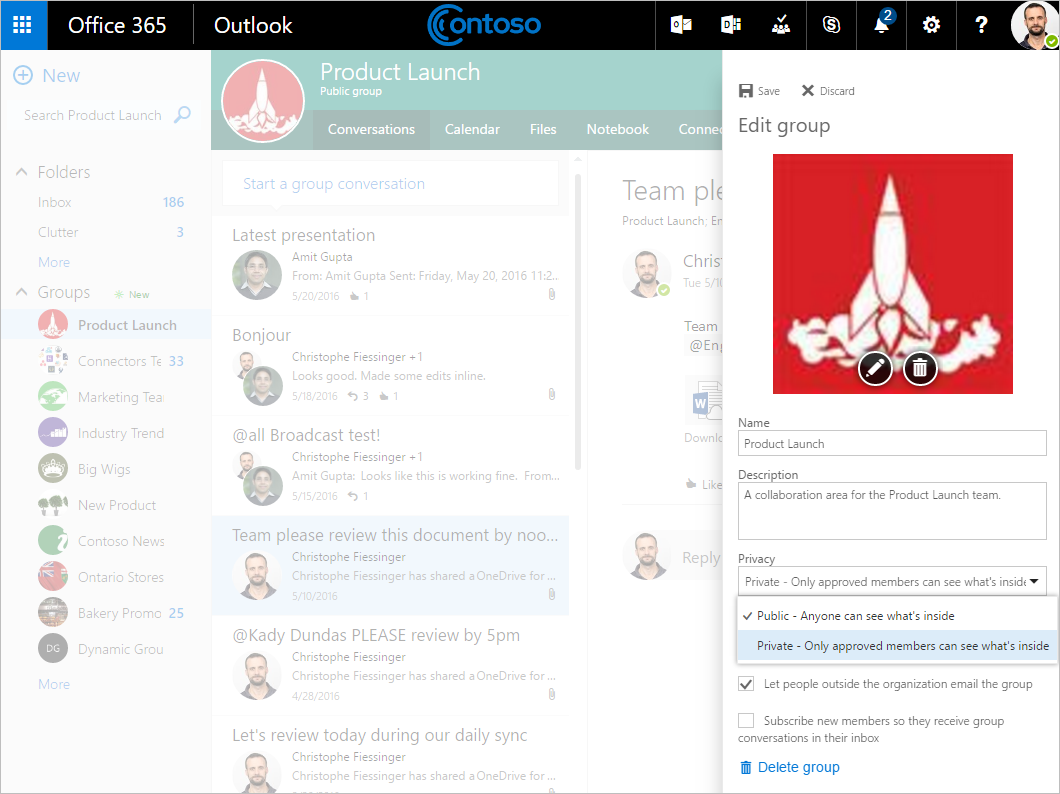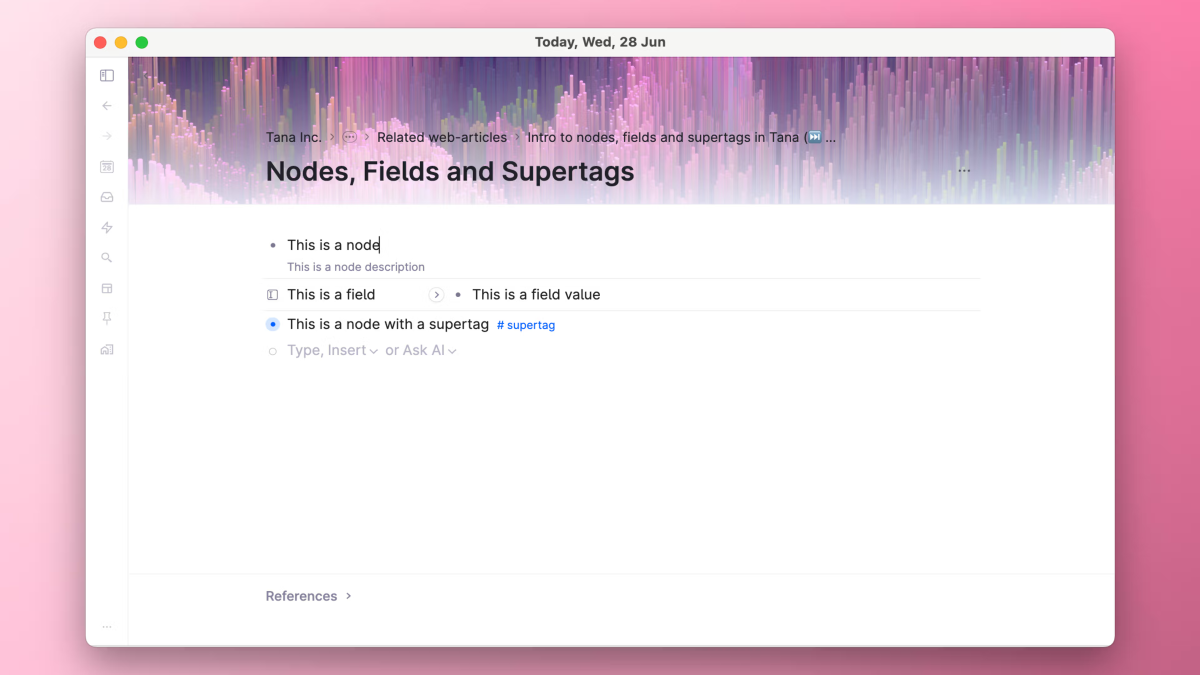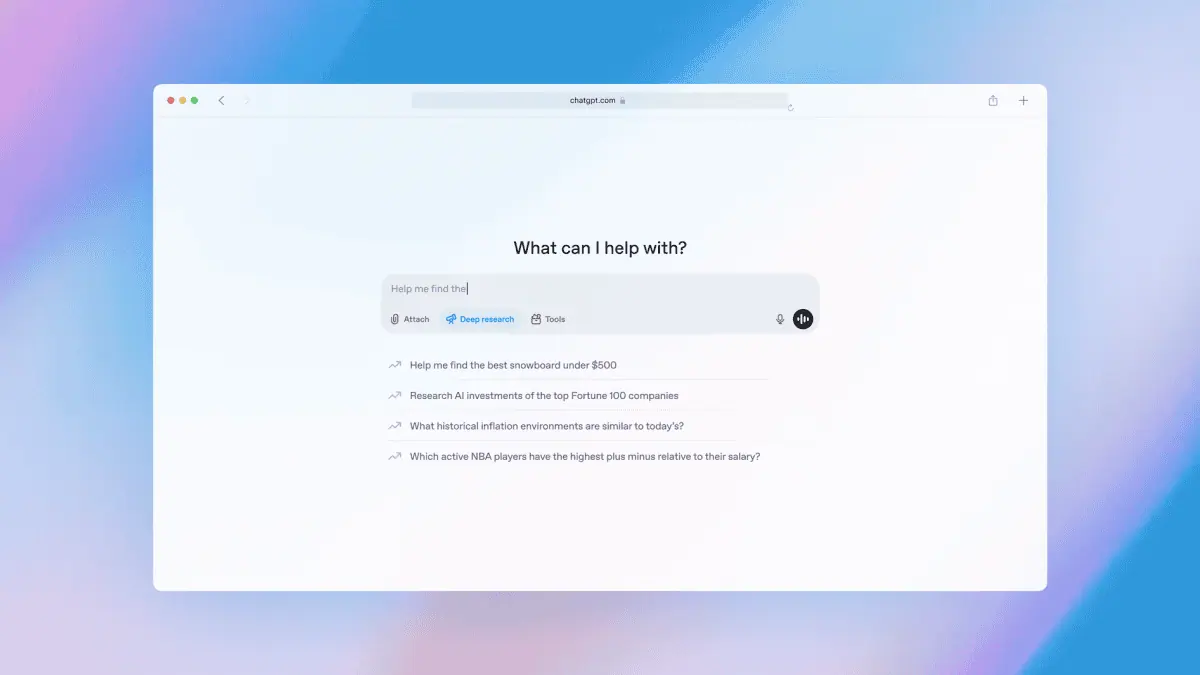Office 365 Groups administration updated with improved privacy settings, more
4 min. read
Published on
Read our disclosure page to find out how can you help MSPoweruser sustain the editorial team Read more

Microsoft has pushed out the June update to Office 365 Groups with administration improvements for Office 365 commercial and education customers
The update brings the following new features:
- Ability to update privacy type—When you create an Office 365 group, users have two privacy options: public (anyone within your organization can access the group’s content) and private (only approved members can access the group’s content). This update enables group owners to change the privacy setting from public to private or vice versa by editing the group properties in Outlook on the web. Administrators can also leverage the Set-UnifiedGroup cmdlets to change the privacy type. Read “Make Office 365 groups public or private” for more information.
- Multi-domain support—Larger organizations use separate email domains to reflect different parts of their businesses. Office 365 groups that are created by users in one domain will share that domain (as opposed to using a common domain across the tenant). Administrators now also have control to create groups in specific domains of their choosing. Read “Multi-domain support for Office 365 Groups” for more information.
- Guidance to configure Office 365 Groups with on-premises Exchange mailbox users—If you’ve configured a hybrid deployment between your on-premises Exchange organization and Office 365, you can make groups created in Office 365 available to your on-premises users by following the steps outlined in “Configure Office 365 Groups with on-premises Exchange hybrid.”
- Allow users to send as the Office 365 group—If you want to enable your group’s shared mailbox to “Send As,” you can now use the PowerShell cmdlets to configure this. Once you enable this setting, your Office 365 group users can use Outlook or Outlook on the web to send and reply to email as the Office 365 group. Users can go to the group, create a new email and change the “Send As” field to the group’s email address. See “Use PowerShell to manage Office 365 Groups” for more information.
Microsoft has also started rolling out the following capabilities today and expected to be fully deployed by the end of July:
- Creation policy in Azure Active Directory—We’ve implemented policy in Azure Active Directory that allows administrators to restrict group creation to certain users. This ensures that the creation of Office 365 groups through all endpoints, such as Planner and Power BI, can be given to selected users. The existing Exchange Mailbox policy only applies to creation in Exchange.
- Usage guidelines—You’ll be able to define usage guidelines for Office 365 Groups—to educate your users about best practices that help keep their groups effective and educate them on internal content policies.
- Data classification and extensible policy—You’ll be able to create a customizable data classification system for Office 365 Groups that allows separation of groups by policy type (e.g., “unclassified,” “corporate confidential” or “top secret”). In this manner, your groups can exhibit the policies of other content in your organization. Extensible policy allows your organization to configure an endpoint that is called whenever a group is created or changed—and you can then implement your own policies for group creation or change.
- Mobile application management—To protect users’ data on the go, we’re working on exposing the Outlook Groups mobile apps in Microsoft Intune as policy-managed apps.
The following features are planned for future updates.
- Exchange Admin Center (EAC) UI for migrating Distribution Lists (DLs) to groups—Building on the scripts we released (mentioned above) for DL migration, you will soon be able to migrate a DL to a group directly from the Exchange Admin Center with one click!
- Naming policy in Azure Active Directory—Administrators will be able to configure a policy for appending text to the beginning or end of a group’s name and email address no matter where the group is created (e.g., Outlook, Planner, Power BI, etc.). Administrators can also configure a list of specific blocked words that can’t be used in group names and also rely on the native list of thousands of blocked words to keep their directories clean.
- Ability to search for private Groups files—By integrating Groups files (stored in a SharePoint document library and surfaced in OneDrive for Business) and Office Delve, users will be able to search content from both public and private groups as long as they’re a member.
In H2 2016 Microsoft will also be adding:
- The ability to add external members to a group
- A SharePoint team site for every group
- Integration of Yammer groups with the Office 365 Groups service.
The rest of Microsoft’s roadmap can be read at fasttrack.microsoft.com/roadmap.









User forum
0 messages